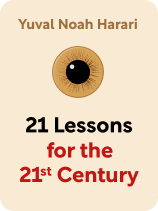

This article is an excerpt from the Shortform book guide to "21 Lessons for the 21st Century" by Yuval Noah Harari. Shortform has the world's best summaries and analyses of books you should be reading.
Like this article? Sign up for a free trial here .
What is post-truth? And when exactly did we transition to the post-truth era?
The phenomenon of post-truth has a long history, but there isn’t really an accepted definition of the term. So, what exactly is post-truth? Essentially, it refers to a political phenomenon where political issues are framed in such a way so as to appeal to people’s emotions. According to Yuval Harari, people have always lived in the era of post-truth.
Keep reading for the answer to the question “what is post-truth?”
What Is Post-Truth and How Did We Get to It?
We are living in a post-truth society, in which lies aren’t merely spread in social media posts, but they are also used to justify government actions. For example, when Russia invaded Crimea in 2014, the Russian government repeatedly denied responsibility for the invasion. The government rationalized that its lie served a higher purpose, which was to reunify Ukraine with Russia.
How did we get to this era of post-truth? The phenomenon has a long history. In fact, the great accomplishments of human progress are owed in part to humans’ ability to create and get others to believe fictional stories in order to work together toward a collective goal. Storytelling is used in this way by different kinds of institutions, including:
- Religion: The stories found in the Bible, Quran, and other holy texts have inspired millions of people to work together to build cathedrals, fight oppression, and even fight wars.
- Nations: Governments spread stories in order to justify their actions and spur public support for their causes. For example, Japan faked attacks on itself in order to justify invading China, and Israel ignored the existence of Palestinians in defending its pursuit of land.
- Political movements: The leading forces in political movements promote stories—or propaganda—to reinforce an image of their politics. For example, Joseph Stalin took a photo with a young, smiling girl and posted the image everywhere in order to promote the fantasy of a happy childhood under Soviet rule, despite the reality of terror and brutality.
- Corporations: Big businesses create stories to sell their products. For example, Coca-Cola fills its ads with images of young, healthy, vibrant Coke drinkers to weave a story that Coca-Cola is linked to youth and vitality, even though drinking soda leads to obesity and other health issues.
Everyone has a responsibility to question and investigate the information she consumes, and to keep an eye out for biases she unknowingly has. You can’t know everything, but you can take two important steps:
- Pay for quality information. Truth is critical in guiding how you act, especially in the face of the 21st-century challenges we are facing. Paying for high-quality information is worth the investment.
- Do your research on topics that matter to you. It’s impossible to become an expert in everything, but research issues that are especially important to you. Read scientific journals and other reliable sources to gain a full understanding of the subject.

———End of Preview———
Like what you just read? Read the rest of the world's best book summary and analysis of Yuval Noah Harari's "21 Lessons for the 21st Century" at Shortform .
Here's what you'll find in our full 21 Lessons for the 21st Century summary :
- What the unique challenges of the 21st century are and will be
- Why religion can't solve these 21st-century challenges
- How algorithms like Netflix recommendations are teaching you not to trust yourself






